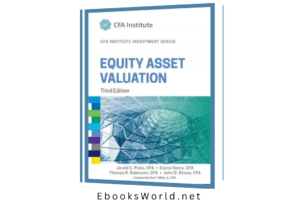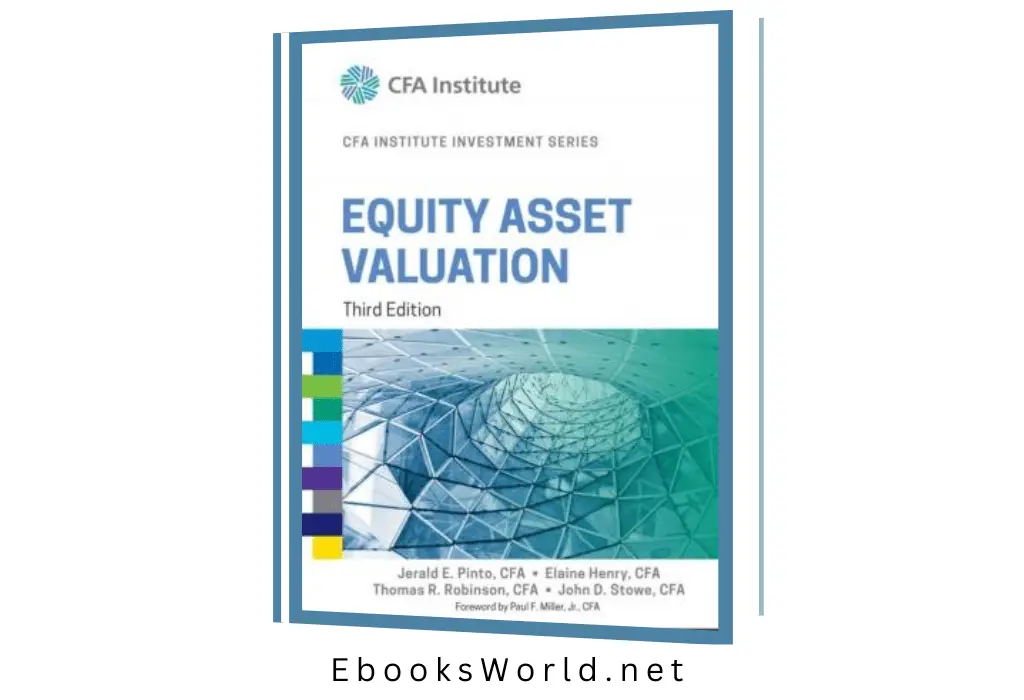Equity Asset Valuation

“Equity Asset Valuation” is a book written by Jerald E. Pinto, Elaine Henry, Thomas R. Robinson, and John D. Stowe. Published by Wiley, it provides an in-depth exploration of equity valuation techniques and principles. The book is primarily designed for finance professionals, students, and anyone interested in understanding how to value stocks and other equity investments. Here’s a summary of the key points and themes covered in the book:
1. Introduction to Equity Valuation:
– The book begins by introducing the fundamental concepts of equity valuation, emphasizing the importance of understanding the factors that influence stock prices.
2. Financial Statements Analysis:
– “Equity Asset Valuation” explains how to analyze financial statements to gain insights into a company’s operations, financial health, and growth prospects. It covers topics such as balance sheets, income statements, and cash flow statements.
3. Forecasting Company Performance:
– The authors discuss methods for forecasting a company’s future financial performance, including revenue projections, expense estimates, and working capital analysis.
4. Discounted Cash Flow (DCF) Valuation:
– DCF valuation is a central theme in the book. It explains how to calculate the intrinsic value of a stock by discounting expected future cash flows to their present value. Various DCF models and techniques are covered.
5. Relative Valuation:
– The book explores relative valuation methods, such as price-to-earnings (P/E) ratios, price-to-book (P/B) ratios, and other multiples. It explains how to compare a company’s valuation to that of its peers and the broader market.
6. Dividend Discount Models (DDM):
– “Equity Asset Valuation” discusses dividend discount models, including the Gordon Growth Model and the Two-Stage Dividend Discount Model. These models are used to value stocks based on expected dividend payments.
7. Free Cash Flow Valuation:
– Free cash flow valuation techniques are presented, focusing on how to estimate a company’s free cash flows and use them to determine its equity value.
8. Market Efficiency and Behavioral Finance:
– The book touches upon market efficiency and the Efficient Market Hypothesis (EMH), as well as behavioral finance concepts that explore how psychological factors can influence stock prices.
9. Valuation for Special Situations:
– Special situations like mergers and acquisitions, initial public offerings (IPOs), and distressed companies are discussed, highlighting how valuation approaches may differ in these scenarios.
10. Real Options:
– The book introduces the concept of real options, which involves considering the value of flexibility and strategic decision-making in the valuation process.
11. Case Studies and Examples:
– Throughout the book, the authors provide case studies and practical examples to illustrate the application of valuation techniques in real-world situations.
“Equity Asset Valuation” is a comprehensive guide to equity valuation methods, offering a detailed examination of various tools and techniques used by financial professionals to determine the fair value of stocks and equity investments. It serves as a valuable resource for individuals seeking to deepen their understanding of financial analysis and equity valuation.







